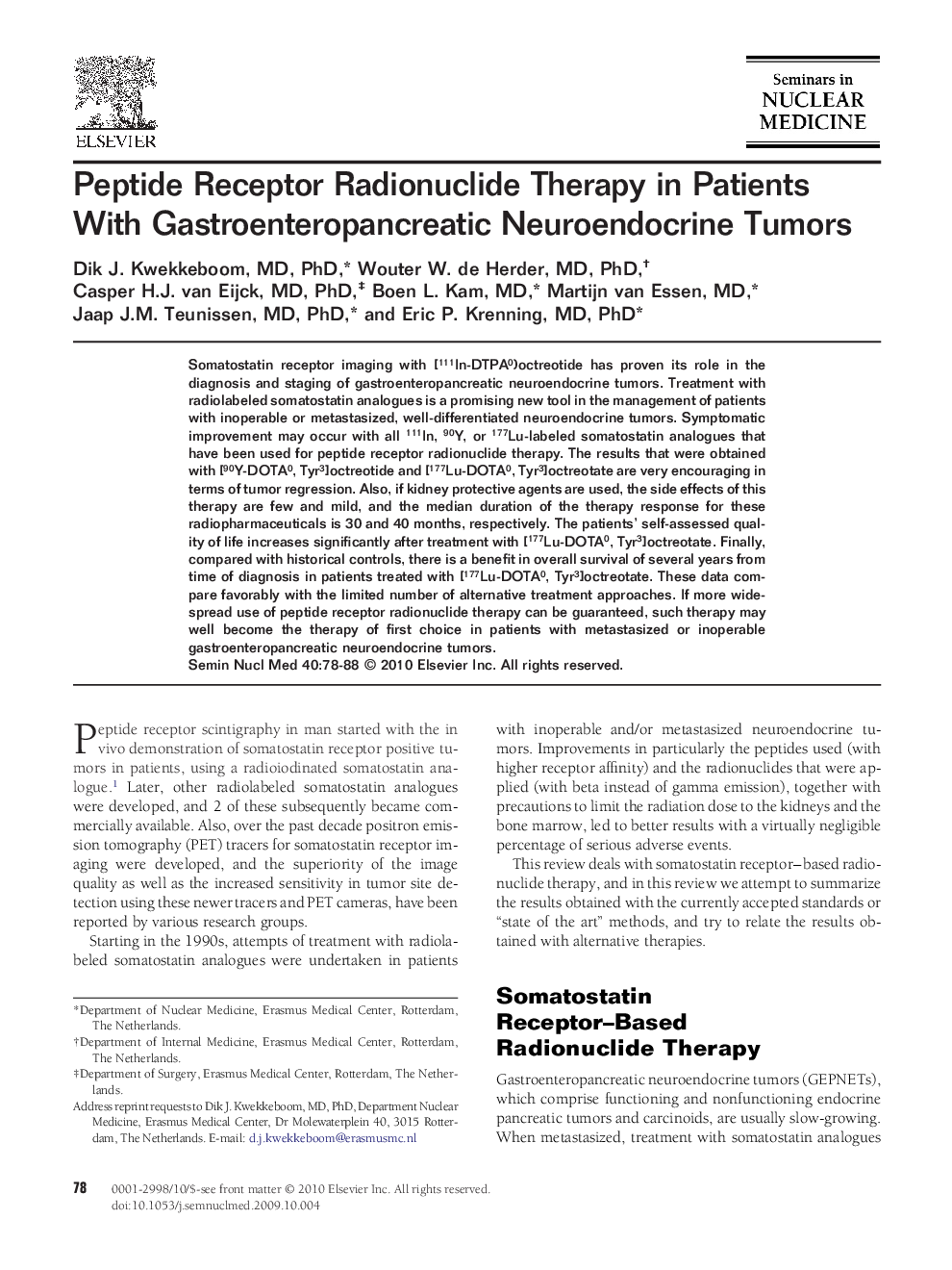| Article ID | Journal | Published Year | Pages | File Type |
|---|---|---|---|---|
| 4251231 | Seminars in Nuclear Medicine | 2010 | 11 Pages |
Somatostatin receptor imaging with [111In-DTPA0)octreotide has proven its role in the diagnosis and staging of gastroenteropancreatic neuroendocrine tumors. Treatment with radiolabeled somatostatin analogues is a promising new tool in the management of patients with inoperable or metastasized, well-differentiated neuroendocrine tumors. Symptomatic improvement may occur with all 111In, 90Y, or 177Lu-labeled somatostatin analogues that have been used for peptide receptor radionuclide therapy. The results that were obtained with [90Y-DOTA0, Tyr3]octreotide and [177Lu-DOTA0, Tyr3]octreotate are very encouraging in terms of tumor regression. Also, if kidney protective agents are used, the side effects of this therapy are few and mild, and the median duration of the therapy response for these radiopharmaceuticals is 30 and 40 months, respectively. The patients' self-assessed quality of life increases significantly after treatment with [177Lu-DOTA0, Tyr3]octreotate. Finally, compared with historical controls, there is a benefit in overall survival of several years from time of diagnosis in patients treated with [177Lu-DOTA0, Tyr3]octreotate. These data compare favorably with the limited number of alternative treatment approaches. If more widespread use of peptide receptor radionuclide therapy can be guaranteed, such therapy may well become the therapy of first choice in patients with metastasized or inoperable gastroenteropancreatic neuroendocrine tumors.
